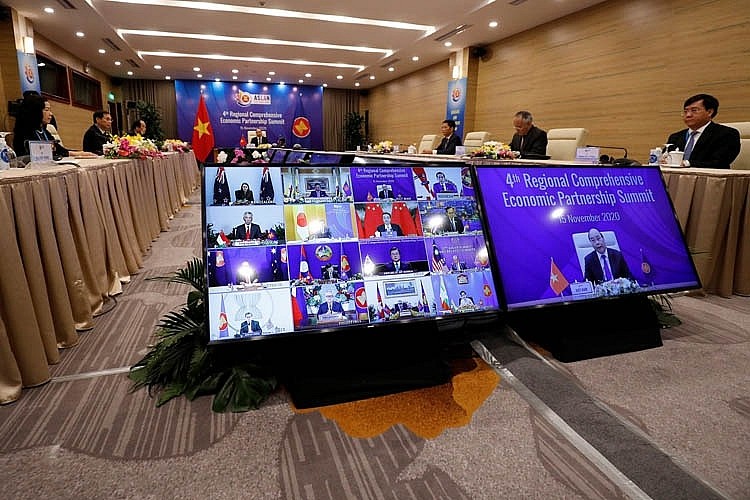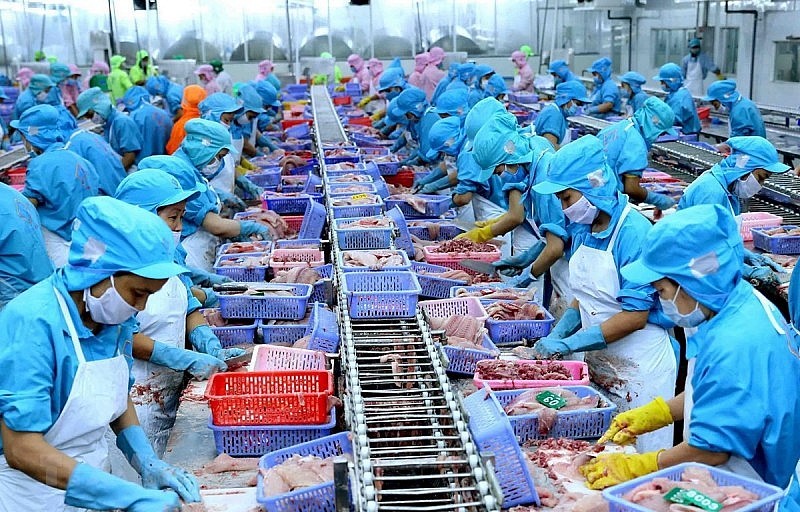Vietnam's Opportunities from World's Largest Trade Deal RCEP
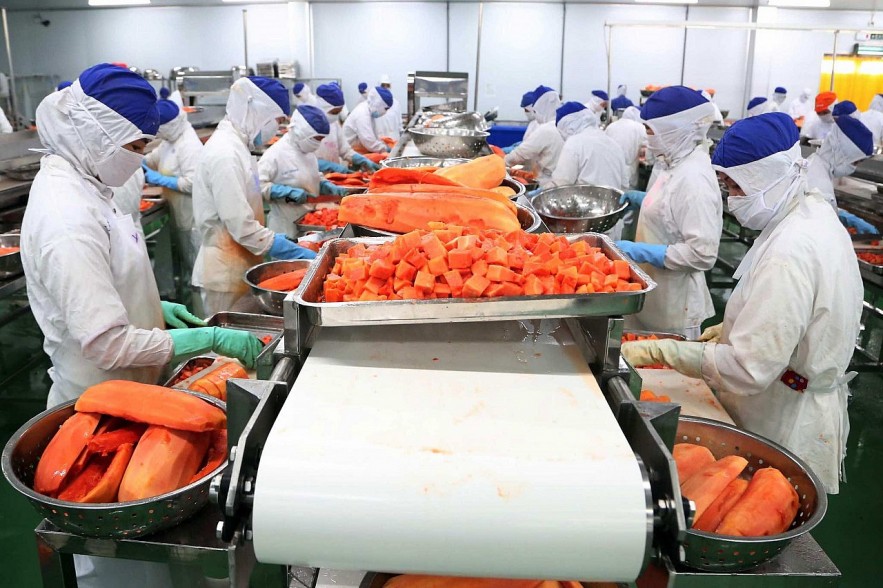 |
| Many Vietnamese goods can increase exports when the RCEP Agreement comes into effect. Photo: Thanh Nien |
The Regional Comprehensive Economic Partnership (RCEP) is called the world's largest trade deal because of the its scale.
Expectations for fruit and seafood
For Vietnam, this agreement becomes even more important in the context that in the last days of 2021, China suddenly stopped importing dragon fruit from Vietnam, causing more than 10,000 tons of this fruit to return to the domestic market.
| "With many partners in RCEP, Vietnam still has a huge trade deficit. Therefore, in the long term, enterprises need to build brands and develop supporting industries to improve competitiveness in a broader market." Economist Vo Tri Thanh |
Therefore, when the RCEP Agreement officially took effect, many businesses expected that the quantity of Vietnamese fruit that could be officially exported to China would be more stable.
Nguyen Dinh Tung, general director of Vina T&T Group, said that currently, only 9 kinds of fresh Vietnamese fruit are allowed to be officially exported to the Chinese market.
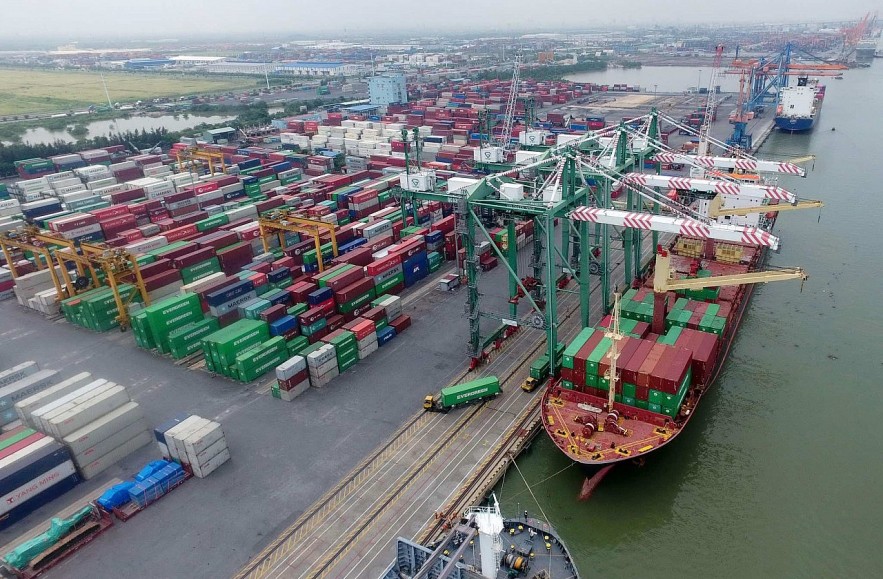 |
| Dinh Vu Port, Hai Phong. Photo: Thanh Nien |
Therefore, with only these 9 types of fruit are officially exported, the amount of Vietnamese fruit exported to China still ensures good growth. Besides, Vietnamese agricultural products are also penetrating large and fastidious markets such as Japan, Australia, and New Zealand, this opportunity will be promoted more in the near future.
Pham Minh Thien, general director of Co May Co., Ltd., said that he will study carefully to expand the market if there is an opportunity. Currently, the company exports high-quality fragrant rice with its own brand to markets such as Hong Kong, Australia, and Canada. Co May is also a small-scale exporter of pangasius to China. The company is calculating to gradually switch to official transactions and expand to new markets this year.
“In fact, our international trade capacity is still limited, most of the goods exported are from partners looking to order. The opportunity from the market in the RCEP Agreement is quite large. We aim at a difficult market, so we need to be careful and will study carefully to expand our export activities", Pham Minh Thien said.
Extending offers
In addition to agricultural and aquatic products, many Vietnamese products such as textiles, footwear, and wooden furniture are also expected to increase their presence in the markets of Japan, Korea, and Australia besides partners such as the US, EU.
Economist Vo Tri Thanh said that RCEP is the world's largest trade deal in terms of scale, so it will certainly have a positive impact on import and export activities of businesses and the Vietnamese economy. The most influential will be the cumulative rules of origin. With previous agreements such as ASEAN-Japan, or Vietnam-Japan or CPTPP (Comprehensive and Progressive Agreement for Trans-Pacific Partnership) between 11 countries, including Vietnam, all three of these FTAs do not have the participation of China and Korea, while these are the two markets that provide a large source of raw materials for the textile and garment industry.
“Enterprises should carefully study RCEP to make good use of the rules of cumulative origin in the short term to promote export activities. However, with many partners in RCEP, Vietnam still has a huge trade deficit. Therefore, in the long term, enterprises need to build brands and develop supporting industries to improve competitiveness in a broader market," Vo Tri Thanh said.
Fierce competition in the export market
Goods from Vietnam will have the opportunity to reach many countries around the world, but the pressure on businesses will also increase.
A representative of a company specializing in exporting leather and footwear said that in the past, Vietnamese goods exported to Japan had an advantage over similar products from China, because this country and Japan did not have bilateral agreements. However, through RCEP, Chinese products also have the opportunity to penetrate more into the Japanese market.
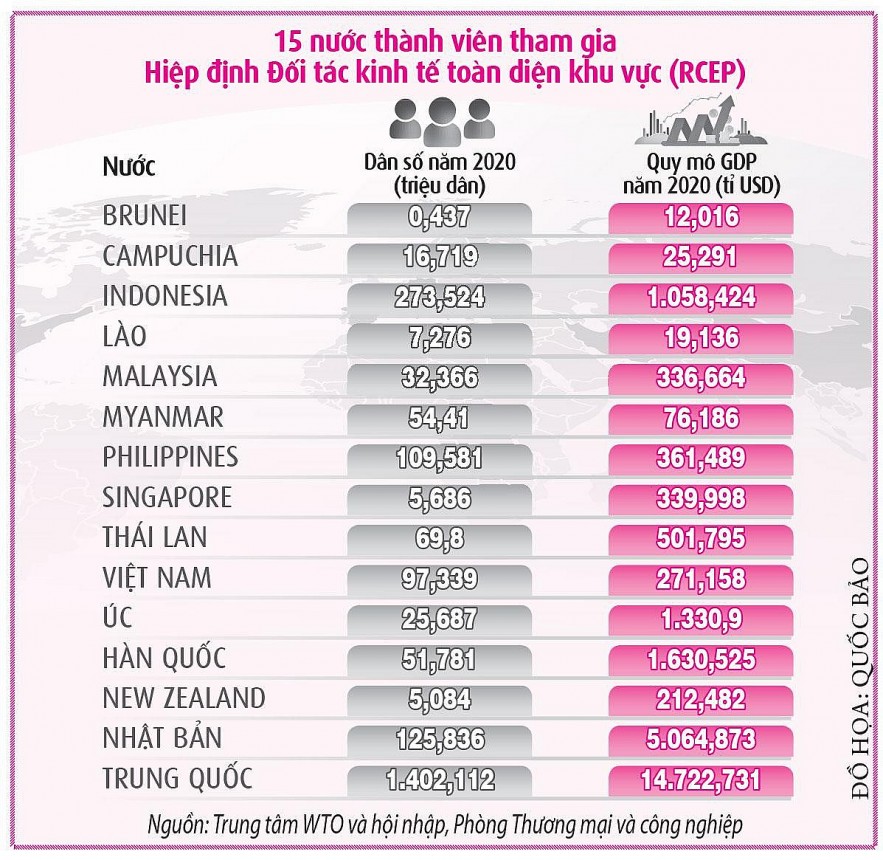 |
| 15 countries join RCEP. Photo: Center for WTO & International Trade |
Luong Hoang Thai, director-general of the Multilateral Trade Policy Department of the Ministry of Industry and Trade, said that basically, RCEP creates a fiercer competitive environment, businesses have to prepare to participate in this competitive environment.
He said: “With these markets, in the past, observation shows that we have not been very proactive. Most of us sit and wait for customers to come. To take advantage of the RCEP Agreement, businesses must be more active. The initiative must also come from state agencies, they need to guide the business community on products, market characteristics, and needs that they can take advantage of. Only by being proactive can we effectively exploit this large potential market.”
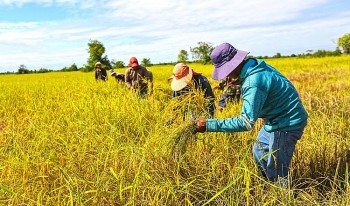 | Cambodian Rice Export to Vietnam Earns 75% Year-on-year Increase Cambodian agricultural products exported to the Vietnamese market have seen a steady uptick, with 3.1 million tonnes of paddy being shipped to the nation over ... |
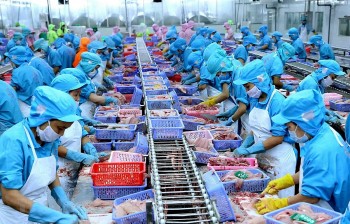 | Vietnam Uses FTAs to Boost Imports, Exports The trade achievements in 2021 are a joint effort of the business community, the clearest proof of the effectiveness of Vietnam's participation and implementation of ... |
 | Room for Vietnam's Trade and Investment Cooperation With Eurasia The Director of the Department of European-American Markets (Ministry of Industry and Trade) emphasized that the Eurasian market is a traditional market of Vietnam in ... |

